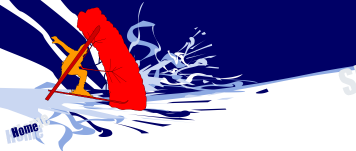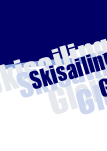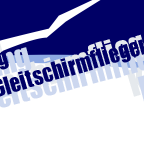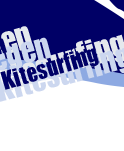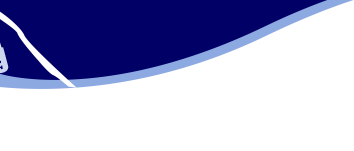PATENTS
Inbetween 1976 and 1979 fours patents were registered under the title "device to drive forward a human body with the help of wind power, especially suitable for skiers". The "steering device for a paraglide" (especially for tandem use)" followed in 1990.
Here are a couple of excerpts from patent 2933050:
GERMANN PATENT OFFICE
2933050
Dr. Dieter Strasilla , 7858 Weil am Rhein
PATENT CLAIMS FROM 1979
1.) Einrichtung zum vorwärtsbewegenden Antreiben eines Körpers durch
Windkraft mittels eines Segels, das an zu einem am Körper befestigbaren
Halteorgan geführten sogenannten Fangleinen gehalten ist und das
mit mindestens zwei von dort zu ihm hinführenden, es manövrierfähig
machenden Steuerleinen versehen ist, dadurch gekennzeichnet, daß
dieses Segelzeug (1) derart ausgeführt vorgesehen ist, daß
es sich mastfrei gehalten, im Wind stehend zu einem tragflügelartig
aerodynamisch wirksam werdenden Flächengebilde zu entfalten vermag,
wobei es dabei noch ausgestattet ist mit durch die Steuerleinen (21,22)
als Verwindungsklappen wirkend betätigbaren Flächenteilen (4 bzw. 26,27)
2.) Einrichtung nach Anspruch 1, dadurch gekennzeichnet, dass das
mastfrei gehalten vorgesehene Segelzeug (1) im Wind eine einem Tragflügel
analoge, in die Breite gehende Form aufweist, die auf ihrer von den
Fangleinen (13,14) abgekehrten Flächenseite eine in Richtung quer
zu dieser Breite sich ergebende und in Richtung des darüber streichenden
Windes abgeflacht auslaufende Wölbung (1') besitzt (Fig.1).
3.) Einrichtung nacn Anspruch 1 und 2, dadurch gekennzeichnet, daß
die Wölbungsform ihres Segelzeugs durch über seine Breite verteilt
und senkrecht zu ihr verlaufend einsteckbare Segellatten (28) stabil
gehalten vorgesehen ist, wobei luvseitig bevorzugt noch eine über
die ganze Breite der Tragflügelform gehende aufblasbare Rundwulst
(29.Fig.4. o.dgl. vorgesehen ist.
130009/0522
4.) Einrichtung nach Anspruch 1 und 2, dadurch gekennzeichnet, dass
ihr Segelzeug (1) als ein mindestens teilweise
aufblasfähig ausgebildeter Hüllenkörper (6) ausgeführt ist.
5.) Einrichtung nach Anspruch 4, dadurch gekennzeichnet, dass der
Hüllenkörper (6) der Breite der Tragflügelform nach in nebeneinander
liegende, vorteilhaft pneumatisch miteinander verbundene Zellen (7)
unterteilt vorgesehen ist, die z. B. gebildet sind durch innen im
Hüllenkörper angeordnete gelochte Zwischenstege (8) usw.(Ansprüche
6 – 11).
Finally it should also be pointed out, that the application possibilites of the invention are not restricted to ski sailing; the device may also be used for ice sailing, water sports and even roller skating (or similar sports) when the terrain is suitable. Summary of US Patent 4,127,247
….The size and shape of canopy 1 may be varied from case-to-case.
The usual commercial or military parachutes, which are disqualified
for jumping due to age or structural weakness may serve as an economical
source of canopies and lines, requiring simple modifications for their
conversion into the mentioned sail. This invention is not restricted
to ski sailing, but it may also be used in the same manner for ice
sailing, sledding as well as for water sports, roller scating or similar
sports.
Comment 2005: Looking at modern paraglides and kitesails it is easy to recognize that the essentials were already described 25 years ago in Strasilla's patents.
My patents from back then already containt basic elements of 1) modern paraglides and 2) inflatable kites optimized for use in water.
In den 70iger Jahren wurden neben dem Skisegeln und Fliege
bereits auch Kitingversuche am Wasser durchgeführt: Udo und Dieter
Strasilla mit Düsenjägerbremsschirm oder Windsurfer als lenkbaren
Anker und Andrea Kuhn als Erster mit Wasserski, Surfbrett und Snowboard.
Siehe Film "Andrea", der den 1. Preis für sportliches
Filmen beim Filmfestival von St. Hilaire erhielt.
Finnish Patent![]() Italian Patent
Italian Patent
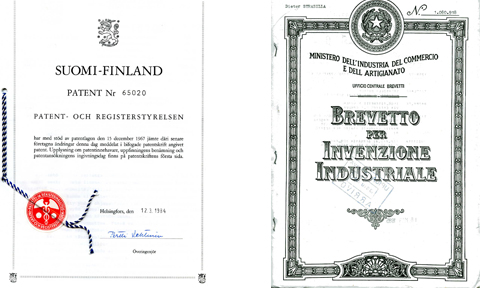
Austrian Patent![]() Japanese Patent
Japanese Patent

KITESURFING PATENTS
The versatility of the Skying on snow and ice, in the air and on the water was protected by patents. Some excerpts from patent 2619951 (1976) that was registered in 16 countries can serve as a documentation: Device to drive forward a human body with the help of wind power, especially suitable for skiers: "Fig 4. schematically illustrates how pulling chute 1 can be remote controlled in a way by extending the steering tethers; this is especially interesting when the chute is supposed to be kept in a fixed position higher up in the air on a steep slope."
"There are also other varities concerning the design of the single parts of the invention, especially for pulling chute 1 which can vary in size and shape."
"Finally, it should also be pointed out, that the application possibilites of the invention are not restricted to ski sailing; the device may also be used for ice sailing, water sports and even roller skating (or similar sports) when the terrain is suitable."
Unfortunately, many of the patents have expired after 20 years and could not be used commercially. The actual kiting boom didn't set in before 2000.

KITES INFLATED WITH AIR
Modern inflated high-performance kites were already described in patent 2933050 (1979):
"According to the cross section of the sail in fig. 1, it is a sleeve body 6 made from a fabric that is as light and airproof as possible and easily foldable; it is designed to be inflated with air or a light gas..."
"The windward leading edge of the sail can be conveniently equipped with an additional inflatable bead."
"Especially in the field of watersports (sailing without a mast) the invention offers a wide range of applications due to the advantages of its sail which has been greatly improved by a versatile new control system. For example, the sailor/glider can attach his sail to a boat in a way that it is easy to undo, he can also handle it in a straight posture standing on a surfboard that might be equipped with a fin, etc."

